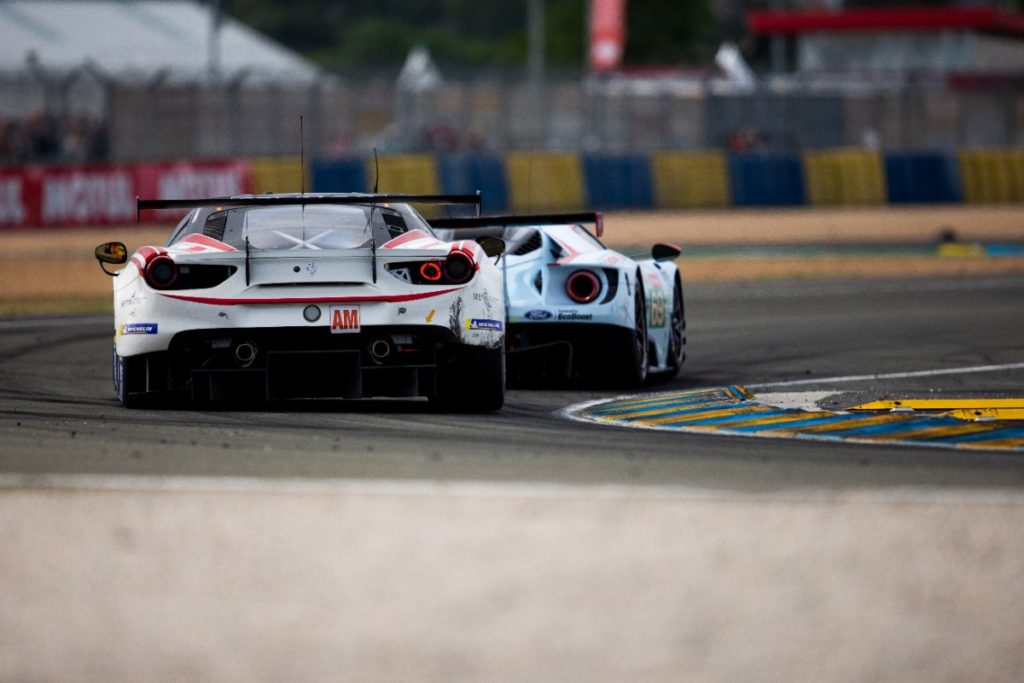The FIA Endurance Committee has released both the LMP1 Equivalence of Technology as well as the GTE Balance of Performance for the upcoming 24 Hours of Le Mans.
The Success Handicap penalties, which have been handed out to the LMP1 runners throughout the 2019/20 FIA WEC season, will not be applied at Le Mans. Instead, LMP1 cars are governed by the Equivalence of Technology (EoT) system.
Under these rules, the Toyota TS050 Hybrids will run at 895 kilograms of minimum weight, which is 7 kilograms heavier than last year, when Sebastien Buemi, Fernando Alonso and Kazuki Nakajima won the race.
The weight for non-hybrid cars has not been changed, with the naturally aspirated Rebellion and ByKolles machinery weighing in at 816 kilograms, while the turbocharged Ginetta G60-LT-P1 – AER has a minimum weight of 833 kilograms.
The petrol allowance and the fuel rig restrictor diameter also varies between the naturally aspirated and turbocharged machinery.
Rebellion and ByKolles, both using the 4.5L Gibson V8, have seen their maximum amount of fuel per stint increased to 55,4 kilograms, a 4.4 kilogram increase over 2019. The Ginetta, using the turbocharged AER V6, will have 52,8 kilograms worth of fuel.
The restrictor diameter for the non-turbo cars will be 22.8 mm, while the Ginetta’s diameter comes in at 23.5 mm.
Finally, the maximum petrol flow during refueling and the maximum amount of petrol energy have remained unchanged from 2019. The refueling flow is set to 115 kilograms per hour for the non-hybrids and 80 kilograms per hour for the Toyotas. The non-hybrid runner can expended an unlimited amount of petrol energy per lap, while Toyota is capped at 124.9 MJ per lap.

Additionally, the Le Mans Balance of Performance for both GTE Pro and GTE Am has also been determined.
GTE Pro has only seen minor changes. The minimum weight for both the Aston Martin Vantage AMR and Ferrari 488 GTE Evo has remained unchanged. The Aston Martin has, however, been given a small increase in both boost pressure and fuel capacity.
The Porsche 911 RSR-19 will make its debut at Le Mans next week. Its minimum weight has been determined at 1286 kilograms, making it the heaviest in class compared to the Aston Martin’s 1246 kilograms and the Ferrari’s 1279 kilograms.
In GTE Am, meanwhile, all three cars have seen a weight increase. The Aston Martin Vantage AMR, Ferrari 488 GTE Evo and previous-gen Porsche 911 RSR have all seen their minimum weight increased by 10 kilograms.
Much like LMP1, the Success Ballast system that has been in place throughout the 2019/20 WEC season will not be used at Le Mans.











Discussion about this post